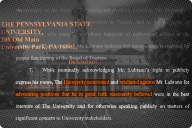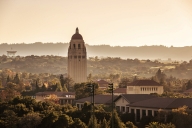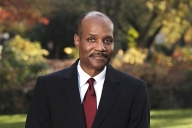You have /5 articles left.
Sign up for a free account or log in.
Wheelock College was founded in 1888 and was known for training teachers and other professionals in the Boston area. In 2018, Wheelock closed, merging with Boston University to become the Wheelock College of Education and Human Development at BU. When Colleges Close: Leading in a Time of Crisis (Johns Hopkins University Press) tells the story of Wheelock's change from a personal perspective. The authors are Mary L. Churchill, who was vice president for academic affairs at Wheelock and is the founding editor of "The University of Venus," one of Inside Higher Ed's blogs, and David J. Chard, the former president of Wheelock. Churchill and Chard currently work at BU Wheelock.
They responded via email to questions about their book.
Q: The chapters in your book each end with "Lessons for Leadership." What was your goal with these lessons? Is there a lesson or two you would cite as particularly important?
A: This book was written to illuminate the very specific case of Wheelock College’s closure and merger into Boston University. We felt that the lessons we learned could be transportable to other contexts. Our goal was to provide a “Lessons for Leadership” section at the end of each chapter that would help the reader by providing questions or thoughts they might reflect on in thinking about their own contexts. One of the most important lessons for those considering a merger is that proactively planning for a merger requires bold leadership on the part of an institution’s Board of Trustees.
Q: Your initial decision to seek a merger partner was controversial in part because Wheelock didn't seem on the verge of closure without it. Why did you decide to seek a partner?
A: While we were not on the verge of closure, many data points including regional demographics, first-year discount rates, graduate debt load and deferred maintenance were part of an increasing trend pointing to budgetary challenges and concerns about our ability to offer a high-quality experience for our students. Our Board of Trustees was examining this well before the decision was made to seek an outside partner.
Q: In seeking a partner, you ultimately went with Boston University, which is a very different institution from Wheelock. Why didn't you go with a similar institution?
A: We had multiple options that resulted from an RFP process that was sent to many institutions across the country. Our strategic options committee was charged with examining all viable proposals. We did have institutions that were more similar to us than Boston University. However, we examined multiple dimensions of the proposals in our discernment process that included the partner institution’s ability to support our existing students to achieve their academic goals, extend our mission and honor our legacy, and fully employ the largest number of our faculty and staff. Additionally, we were looking for a partner that saw Wheelock College as a value to its programming, rather than simply an acquisition. After a careful assessment of the proposals, we found that institutions that were more similar to us were not able to do these things as well as BU.
Q: How has Boston University changed the nature of the work done by faculty members who were formerly at Wheelock?
A: There are several answers to this question. In some cases, faculty have transitioned from historic Wheelock into departments where they are not with other Wheelock colleagues (e.g., political science, mathematics). In many cases, these faculty members are making important contributions through their teaching, restarting their research focus and providing key advising support to BU students. Within the BU Wheelock College of Education and Human Development, the faculty members who transitioned from historic Wheelock College were veteran faculty with tremendous leadership experience (e.g., former deans, department chairs, committee chairs). Several have assumed similar leadership positions at BU Wheelock. Others are engaged in building new programs, teaching their courses, supervising and advising students. In some cases, they are serving on doctoral dissertation committees. This was not available to them at historic Wheelock College.
Q: Looking back, what stands out as a lesson from the process?
A: There were many lessons to learn from this process. The one that stands out and continues to serve us every day as we continue the transition to BU is “communication, communication, communication.” Part of our transition has been during the global pandemic. As we continue our work, but remotely, our ability to communicate effectively is paramount. This was true throughout the merger process as well. We met and communicated news daily to keep people updated about what we knew, and often didn’t know, about the process. Crises in any sector require leadership to be overly communicative about anticipated change. It requires honesty when you don’t know which direction will be taken and transparency once you do know. This has been tremendously useful in helping people transition.
Q: With the pandemic, some colleges have closed or merged, and others are looking at possibly doing so. What is your advice to them?
A: There are many important pieces of advice we could offer, but there is no one-size-fits-all response to the challenges that institutions are facing. Perhaps the one piece of advice we would offer is to pay close attention to all of your sources of data and try to make decisions in a manner that prevents you from reaching a point where you are unable to control the outcomes. This may mean making closure or merger decisions earlier than anticipated in order to protect your students and to serve the mission of the institution. Early decision making is the hardest step to take because it seems very final. However, if the leadership of the college or university is unable to make these decisions in a timely manner, there will be difficult consequences for everyone involved.








